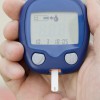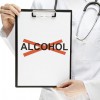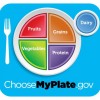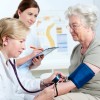 Checking your blood glucose levels is an important part of managing diabetes. Your blood glucose values let you know how well your care plan is working and if you need to make any changes. This 3-page fact sheet was written by Jennifer Hillan and Linda B. Bobroff, and published by the UF Department of Family Youth and Community Sciences, February 2015.(Photo iStock/Thinkstock.com)
Checking your blood glucose levels is an important part of managing diabetes. Your blood glucose values let you know how well your care plan is working and if you need to make any changes. This 3-page fact sheet was written by Jennifer Hillan and Linda B. Bobroff, and published by the UF Department of Family Youth and Community Sciences, February 2015.(Photo iStock/Thinkstock.com)
http://edis.ifas.ufl.edu/fy868
Tag: Linda B. Bobroff
Seguridad Alimentaria: ¿Su cocina pasa la prueba?
 Los adultos mayores corren un riesgo mayor de contraer enfermedades por alimentos. Para ayudar a reducir el riesgo, es importante tener prácticas de manipulación de alimentos sanas. ¿Cómo se mide su cocina?
Los adultos mayores corren un riesgo mayor de contraer enfermedades por alimentos. Para ayudar a reducir el riesgo, es importante tener prácticas de manipulación de alimentos sanas. ¿Cómo se mide su cocina?
This 2-page fact sheet is the Spanish language version of Food Safety: Does Your Kitchen Pass the Test?, written by Jennifer Hillan and Linda B. Bobroff, and published by the UF Department of Family Youth and Community Sciences, December 2014.
http://edis.ifas.ufl.edu/fy1163
Breast Cancer: Making Sense of the Numbers
 A breast cancer diagnosis is always a challenge to the patient and her family.* People react in different ways to a breast cancer diagnosis. Some breast cancer patients want to take an active role in understanding and choosing their treatment, and others prefer to leave decisions to their health care providers. This 5-page fact sheet, first in a 12-part series on breast cancer, provides information that will help persons who want to understand and be actively involved in treatment decisions. Was written by Martha C. Monroe, Barbara F. Shea, and Linda Bobroff, and published by the UF Department of Family Youth and Community Sciences, December 2014. (Photo: iStock/Thinkstock)
A breast cancer diagnosis is always a challenge to the patient and her family.* People react in different ways to a breast cancer diagnosis. Some breast cancer patients want to take an active role in understanding and choosing their treatment, and others prefer to leave decisions to their health care providers. This 5-page fact sheet, first in a 12-part series on breast cancer, provides information that will help persons who want to understand and be actively involved in treatment decisions. Was written by Martha C. Monroe, Barbara F. Shea, and Linda Bobroff, and published by the UF Department of Family Youth and Community Sciences, December 2014. (Photo: iStock/Thinkstock)
http://edis.ifas.ufl.edu/fy895
4-H Pizza Garden: An Agricultural Adventure
 This curriculum was designed for educators to teach young people about where their food originates by using something children love to eat…PIZZA! According to a recent Gallup poll, kids between the ages of 3 and 11 prefer pizza to all other foods for lunch and dinner. Americans eat about 100 acres of pizza each day, or 350 slices per second!This 4-H in the Classroom project, originating in Pinellas County, Florida, was designed for grades 3–5, but can be adapted to serve other grade levels. The lessons cover subject areas such as mathematics, social studies, language arts, and science. It has been used in Pinellas County very successfully since 2000 by the 4-H Program in collaboration with their Florida Ag in the Classroom Initiative. This 89-page fact sheet was written by Janet Golden, Joy Jordan, Nan Jensen, Betty Lipe, Millie Ferrer, Anne Fugate, Erin Karkheck, Linda Bobroff, Karla Shelnutt, and Tracy Tesdall, and published by the UF Department of 4-H Youth Development, November 2014.
This curriculum was designed for educators to teach young people about where their food originates by using something children love to eat…PIZZA! According to a recent Gallup poll, kids between the ages of 3 and 11 prefer pizza to all other foods for lunch and dinner. Americans eat about 100 acres of pizza each day, or 350 slices per second!This 4-H in the Classroom project, originating in Pinellas County, Florida, was designed for grades 3–5, but can be adapted to serve other grade levels. The lessons cover subject areas such as mathematics, social studies, language arts, and science. It has been used in Pinellas County very successfully since 2000 by the 4-H Program in collaboration with their Florida Ag in the Classroom Initiative. This 89-page fact sheet was written by Janet Golden, Joy Jordan, Nan Jensen, Betty Lipe, Millie Ferrer, Anne Fugate, Erin Karkheck, Linda Bobroff, Karla Shelnutt, and Tracy Tesdall, and published by the UF Department of 4-H Youth Development, November 2014.
http://edis.ifas.ufl.edu/4h356
Healthy Living for Elders: Use Your Medicines Safely!
 Medicines can help us feel better and improve our health, but if we do not use them correctly, they can make us feel worse or even cause major health problems. To use your medicines safely, keep the following tips in mind. This 4-page large print fact sheet was written by Paulina Wittkowsky, Linda B. Bobroff, and Emily Minton, and published by the UF Department of Family Youth and Community Sciences, November 2014. (Photo: Thinkstock.com)
Medicines can help us feel better and improve our health, but if we do not use them correctly, they can make us feel worse or even cause major health problems. To use your medicines safely, keep the following tips in mind. This 4-page large print fact sheet was written by Paulina Wittkowsky, Linda B. Bobroff, and Emily Minton, and published by the UF Department of Family Youth and Community Sciences, November 2014. (Photo: Thinkstock.com)
http://edis.ifas.ufl.edu/fy667
Facts about Potassium
 Potassium is a mineral found inside body cells. It is one of several minerals known as electrolytes. It is important because it helps regulate fluid and electrolyte balance, maintain normal blood pressure, transmit nerve impulses, control muscle contraction, and maintain healthy bones. Legumes are good sources of potassium, as are nuts and seeds. This 2-page fact sheet was written by R. Elaine Turner and Linda B. Bobroff, and published by the UF Department of Family Youth and Community Sciences, September 2014. (Photo: tofumax/iStock/Thinkstock.com)
Potassium is a mineral found inside body cells. It is one of several minerals known as electrolytes. It is important because it helps regulate fluid and electrolyte balance, maintain normal blood pressure, transmit nerve impulses, control muscle contraction, and maintain healthy bones. Legumes are good sources of potassium, as are nuts and seeds. This 2-page fact sheet was written by R. Elaine Turner and Linda B. Bobroff, and published by the UF Department of Family Youth and Community Sciences, September 2014. (Photo: tofumax/iStock/Thinkstock.com)
http://edis.ifas.ufl.edu/fy889
Elder Nutrition
 Good nutrition is important throughout life, starting even before we are born. However, at certain stages in life, such as infancy, pregnancy, and in older age, the importance of having good eating habits is especially critical. This 8-page fact sheet focuses on how aging affects nutrition and diet and choices that older adults can make to improve or maintain their health and well-being as they age.was written by Linda B. Bobroff and Martie Gillen, and published by the UF Department of Family Youth and Community Sciences, April 2014.
Good nutrition is important throughout life, starting even before we are born. However, at certain stages in life, such as infancy, pregnancy, and in older age, the importance of having good eating habits is especially critical. This 8-page fact sheet focuses on how aging affects nutrition and diet and choices that older adults can make to improve or maintain their health and well-being as they age.was written by Linda B. Bobroff and Martie Gillen, and published by the UF Department of Family Youth and Community Sciences, April 2014.
http://edis.ifas.ufl.edu/fy628
Healthy Living: Diabetes Warning Signs
 Could you have diabetes and not know it? It is possible. More than one-fourth of the people who have diabetes don’t know they have the disease! Treating and managing diabetes greatly decreases the risk of diabetes-related health problems. Review the list of warning signs below and check any that you have experienced. This 2-page fact sheet was written by Linda B. Bobroff, and published by the UF Department of Family Youth and Community Sciences, July 2014.
Could you have diabetes and not know it? It is possible. More than one-fourth of the people who have diabetes don’t know they have the disease! Treating and managing diabetes greatly decreases the risk of diabetes-related health problems. Review the list of warning signs below and check any that you have experienced. This 2-page fact sheet was written by Linda B. Bobroff, and published by the UF Department of Family Youth and Community Sciences, July 2014.
http://edis.ifas.ufl.edu/fy084
Healthy Living: Food Can Affect Your Medicines
 Do the foods you eat affect the way your medicines work? It’s very possible. Certain foods can affect the way prescription and over-the-counter medicines work by delaying, decreasing, or enhancing how much of the drug is absorbed by the body. This can cause unwanted and harmful side effects. Follow the information in this 2-page fact sheet to reduce your risk of common food and drug interactions. Written by Paulina Wittkowsky and Linda B. Bobroff, and published by the UF Department of Family Youth and Community Sciences, May 2014.
Do the foods you eat affect the way your medicines work? It’s very possible. Certain foods can affect the way prescription and over-the-counter medicines work by delaying, decreasing, or enhancing how much of the drug is absorbed by the body. This can cause unwanted and harmful side effects. Follow the information in this 2-page fact sheet to reduce your risk of common food and drug interactions. Written by Paulina Wittkowsky and Linda B. Bobroff, and published by the UF Department of Family Youth and Community Sciences, May 2014.
http://edis.ifas.ufl.edu/fy676
MyPlate “10 Tips” Nutrition Education series
 After introducing MyPlate in June 2011, USDA provided a series of one-page fact sheets to help consumers use the dietary advice of the Dietary Guidelines 2010. The USDA added new fact sheets in December 2011 and continued adding fact sheets in 2012, 2013, and 2014. These fact sheets are distributed by UF/IFAS Extension for Extension faculty, health professionals, and consumers. They are also called the “Ten Tips Nutrition Education Series” and “DG TipSheets”
After introducing MyPlate in June 2011, USDA provided a series of one-page fact sheets to help consumers use the dietary advice of the Dietary Guidelines 2010. The USDA added new fact sheets in December 2011 and continued adding fact sheets in 2012, 2013, and 2014. These fact sheets are distributed by UF/IFAS Extension for Extension faculty, health professionals, and consumers. They are also called the “Ten Tips Nutrition Education Series” and “DG TipSheets”
New in 2014:
- 32. Make Healthier Holiday Choices
- 33. Men’s Health: Get the Facts to Feel and Look Better
- 34. Teen Guys: Choose the Foods You Need To Grow
- 35. Women’s Health: Make Better Food Choices
- 36. Teen Girls: Eat Smart and Be Active As You Grow
- 37. Save More at the Grocery Store
http://edis.ifas.ufl.edu/topic_myplate_nutrition_education_series
Facts about Vitamin D
 Vitamin D is needed for normal absorption of calcium and phosphorus. It helps put these minerals into bones and teeth. This makes bones stronger and reduces risk for bone fractures. Vitamin D also helps keep the immune system functioning normally, so our bodies can resist some types of disease. This 2-page fact sheet was written by Linda B. Bobroff and Isabel Valentín-Oquendo, and published by the UF Department of Family Youth and Community Sciences, February 2014.
Vitamin D is needed for normal absorption of calcium and phosphorus. It helps put these minerals into bones and teeth. This makes bones stronger and reduces risk for bone fractures. Vitamin D also helps keep the immune system functioning normally, so our bodies can resist some types of disease. This 2-page fact sheet was written by Linda B. Bobroff and Isabel Valentín-Oquendo, and published by the UF Department of Family Youth and Community Sciences, February 2014.
http://edis.ifas.ufl.edu/fy207
Food Safety: High Risk Foods Crossword
 Some foods are more likely to cause foodborne illness than others. Unpasteurized milk or juices are not safe to consume. Uncooked foods that are made with raw or undercooked eggs are especially risky. This 2-page fact sheet was written by Linda B. Bobroff and Jennifer Hillan, and published by the UF Department of Family Youth and Community Sciences, February 2014.
Some foods are more likely to cause foodborne illness than others. Unpasteurized milk or juices are not safe to consume. Uncooked foods that are made with raw or undercooked eggs are especially risky. This 2-page fact sheet was written by Linda B. Bobroff and Jennifer Hillan, and published by the UF Department of Family Youth and Community Sciences, February 2014.
http://edis.ifas.ufl.edu/fy927
Healthy Eating: Food Storage Guide
 If you don’t shop for groceries often, you may want to buy food that will last until your next trip to the store. The following storage guidelines for perishable foods will help you decide how much food to buy when you visit the grocery. Keep in mind that safe storage times depend on the condition of the food when you purchase it and your refrigerator temperature and humidity. Check foods often for any signs of spoilage. This 2-page fact sheet was written by Linda B. Bobroff and Jennifer Hillan, and published by the UF Department of Family Youth and Community Sciences, October 2013.
If you don’t shop for groceries often, you may want to buy food that will last until your next trip to the store. The following storage guidelines for perishable foods will help you decide how much food to buy when you visit the grocery. Keep in mind that safe storage times depend on the condition of the food when you purchase it and your refrigerator temperature and humidity. Check foods often for any signs of spoilage. This 2-page fact sheet was written by Linda B. Bobroff and Jennifer Hillan, and published by the UF Department of Family Youth and Community Sciences, October 2013.
http://edis.ifas.ufl.edu/fy699
Healthy Living: Keep Track of Your Blood Pressure
 Every time you take your blood pressure, write down the date and time, the blood pressure measurement, and where it was taken (home, doctor’s office, etc.). Not only that, but include any comments your health care provider made and anything you would like to note, such as how you feel or medications you recently started or stopped. This 2-page fact sheet was written by Linda B. Bobroff and Leigh Ann Martin, and published by the UF Department of Family Youth and Community Sciences, October 2013.
Every time you take your blood pressure, write down the date and time, the blood pressure measurement, and where it was taken (home, doctor’s office, etc.). Not only that, but include any comments your health care provider made and anything you would like to note, such as how you feel or medications you recently started or stopped. This 2-page fact sheet was written by Linda B. Bobroff and Leigh Ann Martin, and published by the UF Department of Family Youth and Community Sciences, October 2013.
http://edis.ifas.ufl.edu/fy662
Fall Prevention: Lifestyle Factors and Fall Risk
 Many things can cause you to fall. The good news is that you can make some easy changes to decrease your risk of falling. This 2-page fact sheet was written by Linda B. Bobroff and Jennifer Hillan, and published by the UF Department of Family Youth and Community Sciences, October 2013.
Many things can cause you to fall. The good news is that you can make some easy changes to decrease your risk of falling. This 2-page fact sheet was written by Linda B. Bobroff and Jennifer Hillan, and published by the UF Department of Family Youth and Community Sciences, October 2013.
http://edis.ifas.ufl.edu/fy736
Food Safety: Does Your Kitchen Pass the Test?
 Older adults are at increased risk for foodborne illness. To help reduce your risk, follow safe food handling practices at home. How does your kitchen measure up? This 3-page fact sheet was written by Linda B. Bobroff and Jennifer Hillan, and published by the UF Department of Family Youth and Community Sciences, October 2013.
Older adults are at increased risk for foodborne illness. To help reduce your risk, follow safe food handling practices at home. How does your kitchen measure up? This 3-page fact sheet was written by Linda B. Bobroff and Jennifer Hillan, and published by the UF Department of Family Youth and Community Sciences, October 2013.
http://edis.ifas.ufl.edu/fy926
Seguridad Alimentaria: Juegatela seguro con los huevos
 Los huevos frescos pueden contener bacterias que podrían causar una enfermedad llamada salmonelosis. Esta enfermedad causada por alimentos provoca vómito y diarrea. Esta puede ser severa y hasta podría ser fatal para los adultos mayores. Reduzca el riesgo de contraer estas enfermedades causadas por sequir estas pautas. This 2-page fact sheet was written by Linda B. Bobroff y Jennifer Hillan, and published by the UF Department of Family Youth and Community Sciences, October 2013.
Los huevos frescos pueden contener bacterias que podrían causar una enfermedad llamada salmonelosis. Esta enfermedad causada por alimentos provoca vómito y diarrea. Esta puede ser severa y hasta podría ser fatal para los adultos mayores. Reduzca el riesgo de contraer estas enfermedades causadas por sequir estas pautas. This 2-page fact sheet was written by Linda B. Bobroff y Jennifer Hillan, and published by the UF Department of Family Youth and Community Sciences, October 2013.
http://edis.ifas.ufl.edu/fy194
Healthy Living: High Blood Pressure
 High blood pressure is increased pressure of blood inside the blood vessels. Too much pressure causes more work for the heart. Another name for high blood pressure is hypertension. About one in three American adults has hypertension and about half of them do not know they have this health problem. This 2-page fact sheet was written by Linda B. Bobroff and Leigh Ann Martin, and published by the UF Department of Family Youth and Community Sciences, September 2013.
High blood pressure is increased pressure of blood inside the blood vessels. Too much pressure causes more work for the heart. Another name for high blood pressure is hypertension. About one in three American adults has hypertension and about half of them do not know they have this health problem. This 2-page fact sheet was written by Linda B. Bobroff and Leigh Ann Martin, and published by the UF Department of Family Youth and Community Sciences, September 2013.
http://edis.ifas.ufl.edu/fy684
Symptoms of Diabetes
 Type 2 diabetes is a growing health concern for children and adults in the United States. Diabetes that is uncontrolled can lead to blindness, kidney disease, heart disease, and amputations. Early diagnosis is critical! If you have any of the symptoms described in this fact sheet, see your health care provider right away! This 1-page fact sheet was written by Linda B. Bobroff, and published by the UF Department of Family Youth and Community Sciences, July 2013.
Type 2 diabetes is a growing health concern for children and adults in the United States. Diabetes that is uncontrolled can lead to blindness, kidney disease, heart disease, and amputations. Early diagnosis is critical! If you have any of the symptoms described in this fact sheet, see your health care provider right away! This 1-page fact sheet was written by Linda B. Bobroff, and published by the UF Department of Family Youth and Community Sciences, July 2013.
http://edis.ifas.ufl.edu/fy344
Facts about Magnesium
 Many Americans don’t get enough magnesium in their diets. But most healthy people do not have signs of deficiency even if their intake is low because the body stores this mineral. However, people who abuse alcohol, take certain diuretic drugs, or have kidney disease may be at risk for magnesium deficiency. Long-lasting diarrhea or vomiting also can cause a deficiency. Older adults often do not get enough magnesium in their diets. This 2-page fact sheet was written by Linda B. Bobroff and Jennifer Hillan, and published by the UF Department of Family Youth and Community Sciences, July 2013.
Many Americans don’t get enough magnesium in their diets. But most healthy people do not have signs of deficiency even if their intake is low because the body stores this mineral. However, people who abuse alcohol, take certain diuretic drugs, or have kidney disease may be at risk for magnesium deficiency. Long-lasting diarrhea or vomiting also can cause a deficiency. Older adults often do not get enough magnesium in their diets. This 2-page fact sheet was written by Linda B. Bobroff and Jennifer Hillan, and published by the UF Department of Family Youth and Community Sciences, July 2013.
http://edis.ifas.ufl.edu/fy1088